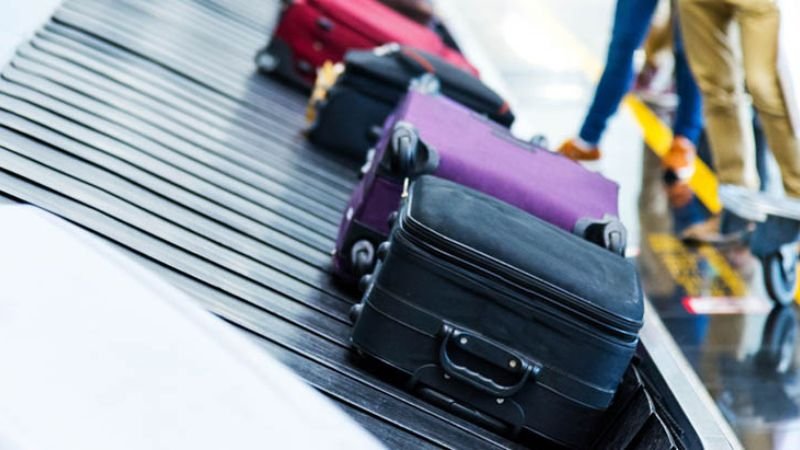Every time you fly with any airline, there’s always confusion about the bags, whether to carry them as cabin luggage, check a bag, or keep both if necessary. But there’s a better to make a decision about it. Look for the type of flight you are taking, how long you’ve planned, and where you are going on this trip. However, the most important thing is to check the airline and its baggage size limitation; then, you’ll be able to find out the pros & cons of using a carry on vs. checked bag.
You can keep your carry-on bag with you inside the cabin and easily put it inside the overhead bin. A checked baggage is usually stored in the cargo luggage hold area once you enter the airport and complete the check-in process. Also, you cannot access your checked bag during the entire flight. This detailed guide will help you understand every minor and major thing about the carry-on and checked bag without any confusion, so sit back, relax, and read till the end!
Understanding the Carry-On Luggage!
A portable handbag not larger in size that you can bring inside the aircraft cabin, and you can quickly and easily place it in the overhead compartment without even taking help from the airline crew. It includes a not-very-large backpack, a duffle bag, or a rolling suitcase. Most airlines restrict the maximum dimensions of a carry-on bag to 22 x 14 x 9 inches, and you cannot exceed more than that at any cost. These dimensions are handles and wheels.
Things Allowed in Carry-On Bag!
Before packing all your favorite stuff inside your carry-on bag, make sure that you read all the guidelines carefully because there are a number of things that are strictly restricted to carry inside the aircraft cabin.
It may include objects with sharp ends larger than 4 inches, such as scissors, knife, etc., firearms, and other tools. However, these items are not complely banned to carry with you but are only not allowed inside the cabin. You can keep these things inside the checked luggage up to a certain limit.
Also, make sure that the items you carry comply with the TSA (Transportation Security Administration) guidelines and that you aren’t breaking any rules. You will have to go through with the TSA check, and you might find them at almost every single airport.
So, it’s always better to be safe from your side and check everything in advance rather than breaking the restrictions and putting yourself in a real hassle.
What is the TSA Liquid Rule?
The TSA Liquid Rule allows you to understand all the liquids that you are carrying inside your luggage. You will be pretty much aware after understanding it and will get a good idea about the things you are carrying solid or liquid, just like the packaged curd. In the case of curd, you are not very aware of whether it’s solid or liquid, and you need serious help in this scenario.
TSA allows you to carry liquid in containers that must not exceed an overall quantity of 3.4 ounces or 100 ml. Additionally, the bag in which you are packing the liquid container must be resealable and of one-quart size. If it’s larger than that, you have to pack it inside your checked bag.
Also, remember that any type of liquid, paste, cream, gel, or aerosol might require additional screening during the TSA Scanning.
Difference Between Carry-On Bag and Personal Item!
Most people are often confused about carry-on luggage and personal items. There is a minor difference between both of them as both can be carried in the aircraft cabin, and you can put them under the seat in front of you and inside the overhead bin.
But there’s one thing that you have to remember, and that is the size. A personal item is always smaller, and most airlines only allow 18 x 14 x 8 inches in size and not more than that. It includes a small handbag, purse, laptop bag, etc. The carry-on bag size must not exceed the overall size limit of 22 x 14 x 9 inches.
Carry-On Bags: Free or Paid?
Most airlines provide a facility to keep your carry-on luggage and personal items inside the cabin without charging additional fees. However, there are a few airlines that don’t offer a carry-on bag option, and travelers can only carry a personal item with them. In such cases, if you are carrying a bag that can only fit inside the overhead compartment and not under the seat in front of you, the airline will charge for it.
Those airlines who are charging for a cabin bag don’t allow you to carry it inside the cabin without paying for it. If you try to do the same, the bag will be checked and you have to pay a checked luggage fee for it.
Everything About Checked Bag!
A piece of luggage placed in the airline’s cargo hold is usually considered a checked bag. The reason for getting it checked can be the larger size of the bag and its weight, as well as providing the maximum comfort and convenience to travelers inside the cabin. That’s why the airline only allows passengers to keep the bag inside the cabin with the minimum possible weight and size. Also, one of the main reasons for checked bags is the items a passenger is carrying. If it includes something that is not allowed inside the cabin, the bag will be checked.
Size & Weight of Checked Bag!
Any airline allowing checked bags for free or charging much less than others doesn’t mean that you can carry the luggage weight and size according to you. All the airlines in the aviation industry have some guidelines and strict policies on every single thing, including the baggage allowance.
The maximum allowed weight of a checked bag must not exceed 50 lbs, and the size must not be more than 62 inches. If, in case, you are carrying overweight luggage of up to 70 lbs, you have to pay extra for the luggage if you aren’t traveling in a premium cabin or have Elite Status. Also, you have to check whether your airline accepts overweight bags or not, as different airlines have different baggage policies.
Applicable Charges for a Checked Bag!
Most airlines usually charge for a checked bag, as many passengers prefer to travel in Economy Class, and airlines don’t offer free checked bag facility with the Economy ticket fare. The checked bag fees depend on various factors, such as the airline you are flying with, your travel destination, and the number of bags you are checking in.
However, if you are flying with Southwest, you don’t have to pay anything for a checked bag as the airline offers free baggage allowance facility, irrespective of the cabin class booked.
If you are holding an Elite Status, purchased a Premium Cabin Class, or have a credit card that allows you free checked bags with the airline, you can use them to avoid paying the additional charges. Suppose you are flying with Delta and planning to carry two checked bags.
Then, Delta Airlines will charge you $35 and $45 for your first and second checked bag, respectively, ensuring that both bags will not be heavier than 50 lbs.
Tips To Skip The Waiting Line!
If you choose to pack your luggage wisely, you will have the chance to skip the waiting line, no matter how long it is. Your decision to carry checked luggage or fly only with a carry-on bag will directly affect your waiting time at the airport. Let’s understand this with an easy example.
If you are traveling by carrying a cabin bag only, you can directly head to the check-in counter and skip the long queues. You can directly visit the airport security with your carry-on luggage and your flight ticket.
If you are carrying a bag that you need to check at the airport, TSA will be the better option to move faster. However, there is no other way to skip the waiting queue at the baggage claim facility at the destination airport.
Lighter, The Better!
It’s always better to travel light. It usually lowers your overall waiting time at the airport, and you can completely enjoy the journey without any hassle. Alternatively, if you are not holding any checked luggage, you will not have to wait even at the baggage claim area at the destination airport. Keep your carry-on bag and/or personal item with you, and skip the checked baggage line with confidence.
Final Thought: Carry on vs. Checked Bag!
Carry on vs. checked bag doesn’t only show the comparison between them but also gives you an idea through which you can easily avoid the long waiting time and take necessary steps to make it happen.
Carry-on and checked baggage difference is not just about the size of the bags; it’s about the type of trip you are planning, the waiting time, and the amount you are paying for the luggage. So, before making any decision and packing your bags full, make sure to check the airline guidelines and other relevant things that can be beneficial for you.
FAQs
If you have less stuff to carry, which only includes the necessary items, you can put them inside the carry-on luggage and avoid paying the additional fees. However, if you are planning for a long vacation, you might need a lot of stuff that can only be possible inside the checked luggage.
Yes, the backpack is considered a carry-on bag only if it falls under the airline’s luggage size guidelines.
Carrying firearms, fireworks, and ammunition is strictly prohibited inside a carry-on luggage.
Carry-on or cabin luggage is usually the first choice for those who want to travel very light and don’t want to carry a lot of items with them on the journey.
That totally depends on whether you need carry-on luggage or not. However, it usually lowers the risk of missing luggage and is also compact in size with lesser weight as compared to a checked bag.

